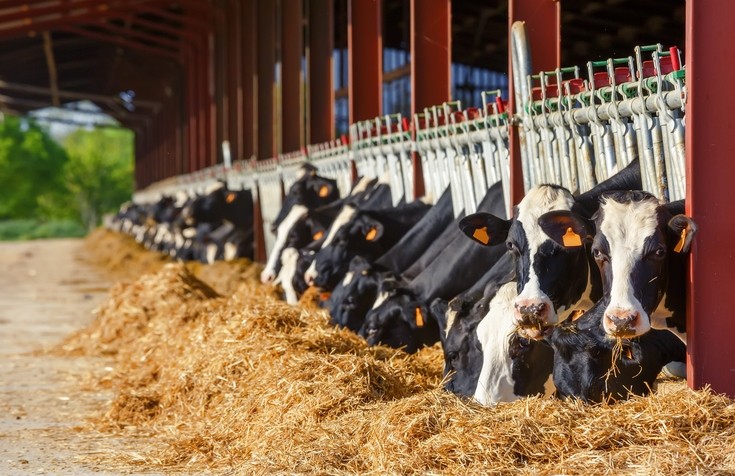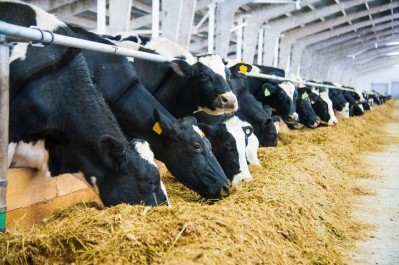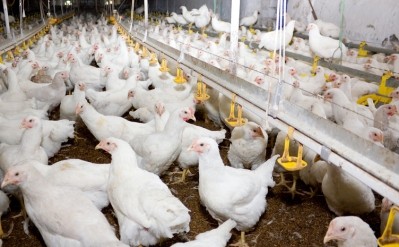Novel way to identify milk from grass-fed dairy cows

A research group with the Leopold Center for Sustainable Agriculture, the US Department of Energy’s Ames Laboratory and Iowa State University examined as series of milk samples from multiple sources using spectroscopy to track the chlorophyll metabolites, said Mark Rasmussen, corresponding author and director of the Leopold Center.
The interest in using spectroscopy to examine components in milk came out of a public discussion on organic milk, the rules regarding organic diets for cows, grazing access and the difficulties in testing to make sure that the rules were followed, he said.
“I was familiar with some of the older papers on the photo-oxidation of milk – so I contacted the colleague of mine in chemistry [and] that’s how it got started,” he told FeedNavigator. “Being aware of this discussion in the [US] organic industry, [we knew] they had been using more complicated gas chromatography and fatty acid analysis, which takes time and it’s more expensive and it’s not clear cut – we thought we could do better, faster and cheaper.”
The research project also included a look at photodegradation of milk components that built upon older work done in that area.
Additionally, some of the researchers involved also had worked on a similar project, which used the metabolism of chlorophyll in the gastrointestinal tract of cattle to check for contamination on animal carcasses.
“When the meat packing industry was trying to clean up its act, we worked on that to use spectroscopy and developed cameras and lighting systems to look at meat carcasses to make sure they were clean,” said Rasmussen.
The research group’s paper published was a “proof of concept” he said.
The team analyzed milk samples from cows on fresh pasture and some not on pastures and some samples coming from store bought milk.
“The other thing about verification testing is it tends to keep people more honest – if they know there’s a way to check,” he said. “If there’s no way to check then cheating could happen, but if there’s a test –I don’t know the level of honesty or dishonesty in the dairy industry, but there have been questions asked.”
Project details and implications
In the initial project, the group found milk from grass-fed cows has higher levels of chlorophyll metabolites, and that such levels can be measured using fluorescence spectroscopy, the researchers said in the paper.
Milk from grass-fed cows has a range of chlorophyll metabolite concentration of about 0.11-0.13 μM (micromolar), while cows raised on a grain and silages diet have a range of 0.01-0.04 μM.
In a series of analyses done on organic milk samples the concentration of chlorophyll metabolites was around 0.07–0.09 μM, they said. “If you shine blue light on the molecules they fluoresce red,” added Rasmussen.
The light-based test is much faster and less expensive than current testing methods, he said. Once a sample has been collected and prepared, it is run through the spectroscope to check the florescence and a number is recorded.
The initial trial also checked to see if any differences were found when milk samples were tested before and after freezing, he said. “We had to make sure that wouldn’t change it,” he added.
The group has since started a larger project aimed at expanding upon and verifying the initial results, he said.
“We’re working on completing the project and verifying if this analytical method will be useful to the industry,” said Rasmussen. “Ultimately, it could be a very inexpensive instrument that could be in milk labs – the bulk tank driver collects samples for other tests, they could easily grab another sample and run this test too.”
If the test is found to be useful, it would be an industry responsibility to decide how to use that information, he said. “We’ll get a range of numbers across the continuum,” he added.
“Animals consuming fresh green grass on pasture as the high point – when we did the fecal detector we fed animals on straw for a few weeks to know what was zero [chlorophyll in the diet], but with dairy cattle you can’t as easily do that to really get [none] – but we’re getting pretty low,” he said. “I don’t know if you’d have a low, medium and high characterization – that would come down to the industry.”
There also is likely to always be some variation in results, he said.
“I’m not sure we ever want to say, ‘This and above is grass fed and this and below is not,’ that’s better left to those in the industry,” said Rasmussen. “But if we provide a tool and they find it useful then I’ll have the satisfaction that we accomplished something.”
Future efforts
The research team is now expanding that work to bolster those results and better fill in some of the mid-points on the result chart, said Rasmussen.
Dairies have already contacted the researchers to ask about having milk analyzed, he said. A goal for the new project is to examine more samples and collect additional information including the cow’s breed and at what stage of lactation the sample was collected.
There also could be some variation on chlorophyll metabolite levels based on the time of year for cows on pasture as they could be eating different plants, he said. The group also is looking at examining different types of milk as opposed to using cream samples.
The new project is ongoing and expected to run for several months to allow for the collection of samples from the same dairies during different times of year, said Rasmussen.
“Some people wanted to jump ahead and say will you check grocery store milk for us,” he said.
But the testing method is not at that level yet, he added.
Source: Journal of Agricultural and Food Chemistry
Title: Using Fluorescence Spectroscopy To Identify Milk from Grass-Fed Dairy Cows and To Monitor Its Photodegradation
Authors: U. Bhattacharjee, D. Jarashow, T. Casey, J. Petrich, M. Rasmussen
DOI: 10.1021/acs.jafc.7b05287














